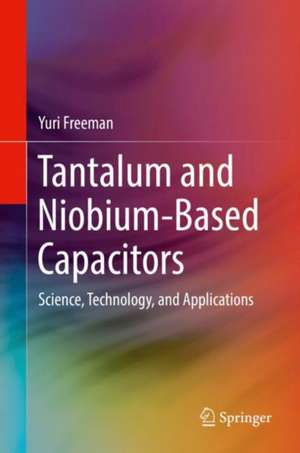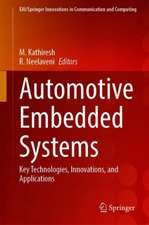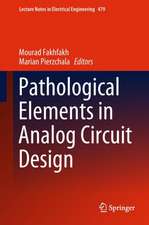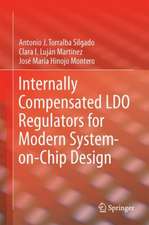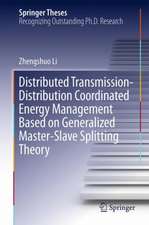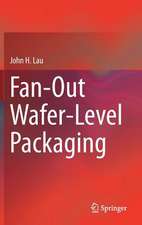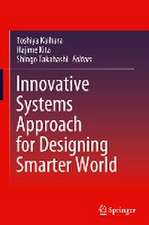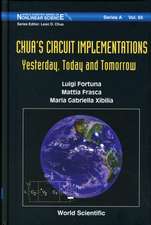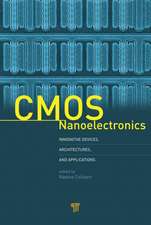Tantalum and Niobium-Based Capacitors: Science, Technology, and Applications
Autor Yuri Freemanen Limba Engleză Hardback – 9 noi 2017
| Toate formatele și edițiile | Preț | Express |
|---|---|---|
| Paperback (2) | 492.93 lei 38-44 zile | |
| Springer International Publishing – 29 aug 2018 | 492.93 lei 38-44 zile | |
| Springer International Publishing – 15 dec 2022 | 577.87 lei 6-8 săpt. | |
| Hardback (2) | 305.83 lei 3-5 săpt. | +21.77 lei 6-10 zile |
| Springer – 9 noi 2017 | 305.83 lei 3-5 săpt. | +21.77 lei 6-10 zile |
| Springer International Publishing – 14 dec 2021 | 583.93 lei 6-8 săpt. |
Preț: 305.83 lei
Nou
Puncte Express: 459
Preț estimativ în valută:
58.52€ • 63.77$ • 49.31£
58.52€ • 63.77$ • 49.31£
Carte disponibilă
Livrare economică 02-16 aprilie
Livrare express 18-22 martie pentru 31.76 lei
Preluare comenzi: 021 569.72.76
Specificații
ISBN-13: 9783319678696
ISBN-10: 3319678698
Pagini: 120
Dimensiuni: 155 x 235 x 15 mm
Greutate: 0.38 kg
Ediția:1st ed. 2018
Editura: Springer
Colecția Springer
Locul publicării:Cham, Switzerland
ISBN-10: 3319678698
Pagini: 120
Dimensiuni: 155 x 235 x 15 mm
Greutate: 0.38 kg
Ediția:1st ed. 2018
Editura: Springer
Colecția Springer
Locul publicării:Cham, Switzerland
Caracteristici
Provides
a
single-source
reference
to
the
science,
technology,
and
applications
of
Tantalum
and
Niobium-based
capacitors
Focuses on Polymer Tantalum capacitors, with rapidly growing applications in special and commercial electronics
Discusses in detail conduction and degradation mechanisms in amorphous dielectrics and multilayer capacitor structures with amorphous dielectrics, such as metal-insulator-semiconductor (MIS) structures with inorganic and organic semiconductors, as well as MOSFET transistors with high k dielectrics
Focuses on Polymer Tantalum capacitors, with rapidly growing applications in special and commercial electronics
Discusses in detail conduction and degradation mechanisms in amorphous dielectrics and multilayer capacitor structures with amorphous dielectrics, such as metal-insulator-semiconductor (MIS) structures with inorganic and organic semiconductors, as well as MOSFET transistors with high k dielectrics
Cuprins
Introduction.- Chap1: Major Degradation Mechanisms.- Chap2: Basic Technology.- Chap3: Applications.- Conclusion.
Notă biografică
Yuri Freeman received his master’s degree as engineer-physicist from the renowned school of Thin Solid Films at the Kharkiv Polytechnic Institute in Ukraine. He graduated among the first in his class and hoped to continue his work in academia. However, as it was still Soviet Union times and graduates were “distributed” often contrary to their choices, Yuri was sent to work for SCB ELITAN, a developer and producer of tantalum capacitors. At first Yuri thought sadly: “What could be more primitive than a capacitor with two plates separated by a dielectric?” He realized only later that his random assignment was an incredible opportunity for a scientist and an engineer! The change started with his involvement in the development of niobium capacitors to substitute tantalum capacitors, enforced by a shortage in tantalum in former Soviet Union. Comparison of the degradation mechanisms in tantalum and niobium capacitors became the topic of his Ph.D. in solid-state physics.
Shortly after the collapse of the Soviet Union, SCB ELITAN was closed and Yuri started his work for Sprague-Electric later Vishay-Sprague, the original manufacturer of solid tantalum capacitors. After several years with Vishay Sprague, where Yuri was promoted to principal scientist, his facility in Sanford, Maine, USA, was closed, and manufacturing moved overseas. While Yuri was looking for a new job, his Siberia-born wife fell in love with sunny South Carolina, and that’s how Yuri ended up at KEMET Electronics, a global producer of tantalum capacitors. This turned out to become the best part of his career with the most challenging projects and the industry’s best team to work with. Now, Yuri is a Fellow/VP, director of strategic development in tantalum at KEMET Electronics. As an adjunct professor, he is also teaching science and technology of the electronic components at the Clemson University.
In 2018, the Tantalum and Niobium International Study Center (TIC) awarded Yuri Freeman the Ekeberg Prize for the “outstanding contribution to the advancement of the knowledge and the understanding of the metallic elements tantalum and niobium”
Shortly after the collapse of the Soviet Union, SCB ELITAN was closed and Yuri started his work for Sprague-Electric later Vishay-Sprague, the original manufacturer of solid tantalum capacitors. After several years with Vishay Sprague, where Yuri was promoted to principal scientist, his facility in Sanford, Maine, USA, was closed, and manufacturing moved overseas. While Yuri was looking for a new job, his Siberia-born wife fell in love with sunny South Carolina, and that’s how Yuri ended up at KEMET Electronics, a global producer of tantalum capacitors. This turned out to become the best part of his career with the most challenging projects and the industry’s best team to work with. Now, Yuri is a Fellow/VP, director of strategic development in tantalum at KEMET Electronics. As an adjunct professor, he is also teaching science and technology of the electronic components at the Clemson University.
In 2018, the Tantalum and Niobium International Study Center (TIC) awarded Yuri Freeman the Ekeberg Prize for the “outstanding contribution to the advancement of the knowledge and the understanding of the metallic elements tantalum and niobium”
Textul de pe ultima copertă
This book provides a comprehensive analysis of the science, technology, and applications of Tantalum and Niobium-based capacitors. The author discusses fundamentals, focusing on thermodynamic stability, major degradation processes and conduction mechanisms in the basic structure of Me-Me2O5-cathode (Me: Ta, Nb). Technology-related coverage includes chapters technology chapters on the major manufacturing steps from capacitor grade powder to the testing of finished capacitors. Applications discussed include high reliability, high charge and energy efficiency, high working voltages, high temperatures, etc. The links between the scientific foundation, breakthrough technologies and outstanding performance and reliability of the capacitors are demonstrated. The theoretical models discussed include the thermodynamics of the amorphous dielectrics, conduction mechanisms in metal-insulator-semiconductor (MIS) structures, band diagrams of the organic semiconductors, etc.
- Provides a single-source reference to the science, technology, and applications of Tantalum and Niobium-based capacitors;
- Focuses on Polymer Tantalum capacitors, with rapidly growing applications in special and commercial electronics;
- Discusses in detail conduction and degradation mechanisms in amorphous dielectrics and multilayer capacitor structures with amorphous dielectrics, such as metal-insulator-semiconductor (MIS) structures with inorganic and organic semiconductors, as well as MOSFET transistors with high k dielectrics.
